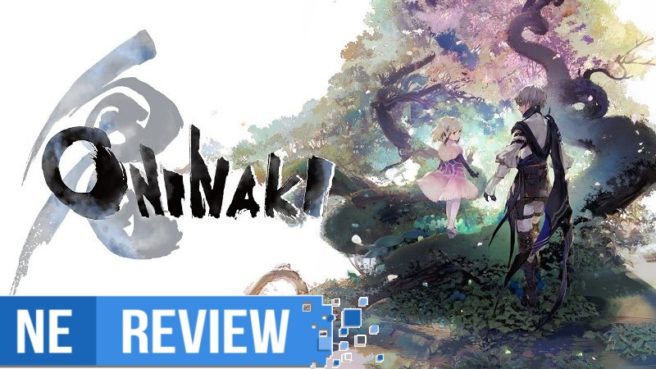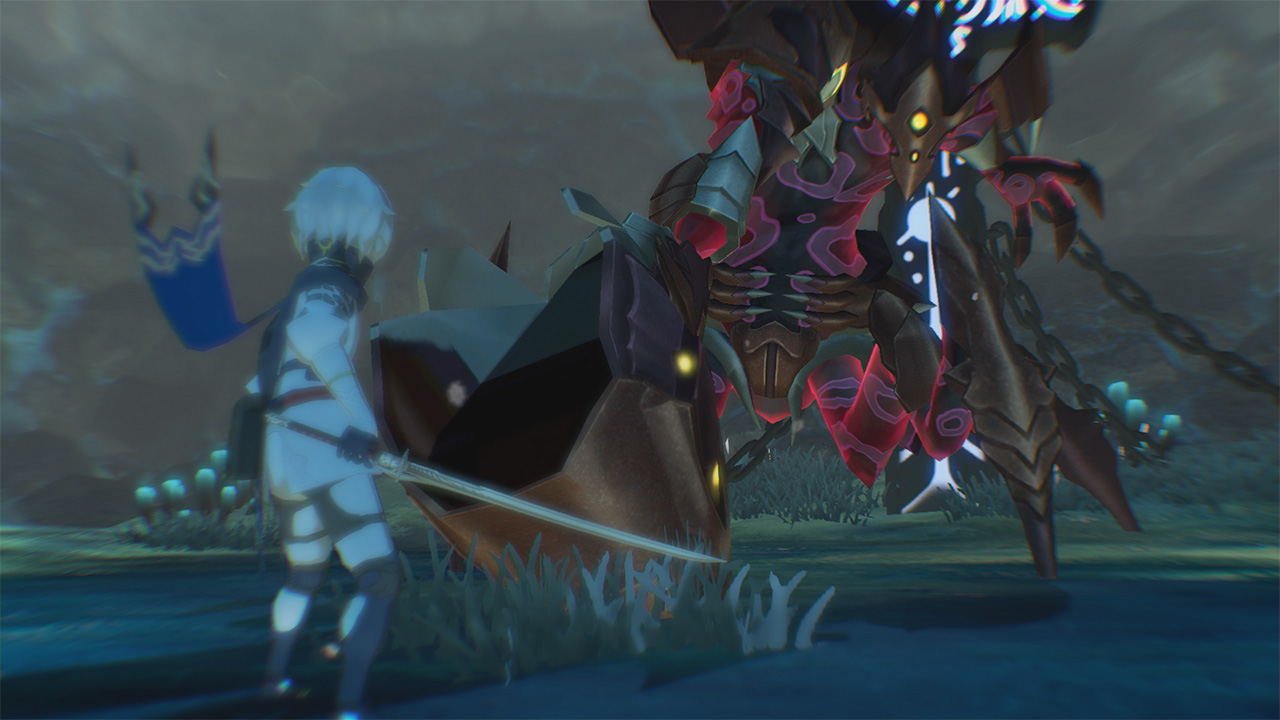[Review] Oninaki
Posted on August 22, 2019 by Dennis Gagliardotto(@LyonHart_) in Reviews, Switch
When Daemon ranks go up, Kagachi’s bond with them deepens, though this can only happen when they’re currently being used. Some skills have overarching effects that benefit the entire team so long as the Daemon is equipped and not in the reserves, like increasing basic attacks across the board or having a longer duration of Manifestation effects, which are basically superpowered attacks and transformations Kagachi and the current Daemon can initiate once a meter in the bottom left corner, known as Affinity, has reached over 100%. The meter can keep rising, and if players don’t feel like using Manifestation, their basic attacks and overall stats will increase, but the higher it gets the less your defense gets, so it becomes a high risk, high reward scenario. You’ll have the ability to dish out massive damage if you continue to let the meter rise, but take a hit and you could see yourself as one of the Lost as well.
Leveling up also doesn’t work in a traditional way either, with Soulstones being the main way of increasing the rank and bond between you and your Daemons. These always drop at random in battles and isn’t always guaranteed, so if there’s a certain Daemon you’d like to level up to reach that next skill you’ve got your eye on, be sure to use them plenty so you can start forming deeper bonds. I feel it’s a fair system that made for balancing and tweaks entirely up to the player, with in-depth skill trees that not only gives you special moves and buffs, but are complementary to the rest of your team. Unlock enough in each Daemon’s skill tree, and you can begin to acquire memories of theirs to help them realize and reconnect to their true self. These memories are known as Daemon Lore and add another incredible layer of depth to Oninaki, proving yet again that everything in this world is given a purpose and isn’t just there without thought or for the sake of gameplay – it all matters. These memories, which can be viewed at Waystones which can help Kagachi fast-travel and manually save the game, show off cutscenes in which the Daemons talk a bit about their past as they slowly recover the information of a prior life. These are typically long monologues and don’t offer much in term of visuals, but the stories themselves are compelling and make you feel for the these other-worldly warriors that aid you in battle.
Oninaki is beautiful all around, and even as you slash away, particles, shadows, and waves of color spew out with every hit, almost in a way reminiscent of The Legend of Zelda: the Wind Waker. The user interface is clean and gives all the necessary information one needs without going overboard with images on screen. Everything is intuitive and meticulously placed, and whether you’re a JRPG aficionado or a casual player, Oninaki makes everything accessible while giving the flexibility of depth if the user seeks it. Every land, every weapon, every moment feels purposeful, and it’s been quite a long time since I’ve felt a game be this whole and sensible.
For a game that’s as heavy and heart-breaking as Oninaki is, I found solace being able to experience a profound adventure that raised many questions, some about being able to see loved-ones again and the like, but Oninaki, much like everything else it represents, has purpose. It’s without a doubt Tokyo RPG Factory’s finest game to date, and now with a much more refined and polished combat system instead of an aged active time battle system, the story didn’t have to suffer at the hands of mediocre gameplay. Performance is also solid, and while it can dip in some of the more populated areas, overall it’s a stable experience that rarely chugs despite all of its flair, and even between the transitions between life and beyond. I Am Setsuna and Lost Sphere, like stated earlier, were very hit or miss for a lot of people. There were promising stories invoking thoughts of sadness and self-realization that were hindered by banal combat and janky mechanics, but Oninaki is a learning experience for both Tokyo RPG Factory and the player – a lesson in growth, empathy, and reflection that should be both celebrated and recognized.
The Verdict
Oninaki isn’t just a game about heavy topics and the challenges we face throughout life coinciding with the questions we have about the universe and where we go after we pass, but it’s a testament to the growth Tokyo RPG Factory themselves have gone through when it comes to storytelling and gameplay since their debut with I Am Setsuna. Oninaki hits all the right marks when it comes to pacing, making sure not to overwhelm the player with enemies while traversing its beautiful yet equally somber world, while having the narrative not only be told through cutscenes, but the environment and the Daemons you acquire as well. Tokyo RPG Factory has set a new bar on having a game be as clean and accessible as possible, both aesthetically and mechanically, while also creating a sub-section of deep lore and gameplay for those that seek it. From top to bottom, beginning to end, Oninaki questions – and in some cases answers – the meaning of life while taking players through unique dungeons and lands that are memorable and leave a lasting impact, each with significance and purpose. Character development, regardless of pertinence to narrative, is great for everyone who even gets a line of dialogue in, and the emotions and ways everyone acts around you feels authentic and makes everyone matter. Oninaki may not end up being for everyone, but for those that have a curiosity for what lies beyond the realm of possibility and what we know as a species, it’ll leave a lasting impression that’ll make it one of Switch’s most memorable games, and one that could be considered a classic in the future.
Oninaki review copy provided by Square Enix for the purposes of this review.


